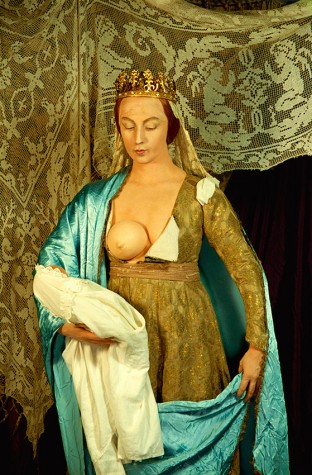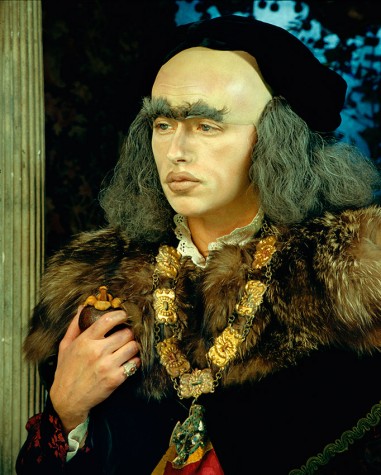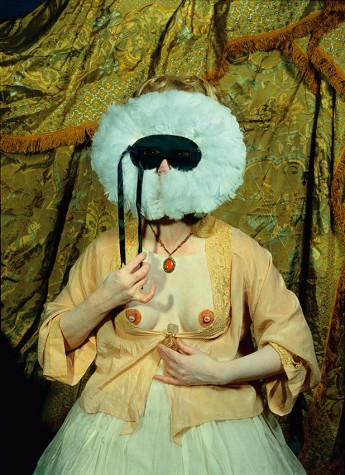Sherman’s history portraits (1988–90) investigate modes of representation in art history and the relationship between painter and model. These classically composed portraits borrow from a number of art-historical periods—Renaissance, baroque, rococo, Neoclassical—and make allusions to paintings by Raphael, Caravaggio, Fragonard, and Ingres (who, like all the Old Masters, were men). This free-association sampling creates a sense of familiarity, but not of any one specific era or style. The subjects (for the first time for Sherman, many are men) include aristocrats, Madonnas with child, clergymen, women of leisure, and milkmaids, who pose with props, costumes, and obvious prostheses. Theatrical and artificial—full of large noses, bulging bellies, squirting breasts, warts, and unibrows—the history portraits are poised between humorous parody and grotesque caricature.
A handful of Sherman’s portraits were inspired by actual paintings. Untitled #224 was made after Caravaggio’s Sick Bacchus (c. 1593), which is commonly believed to be a self-portrait of the artist as the Roman god of wine. In Sherman’s reinterpretation, the numerous layers of representation—a female artist impersonating a male artist impersonating a pagan divinity—create a sense of remove, pastiche, and criticality. Even where Sherman’s pictures offer a gleam of art-historical recognition, she has inserted her own interpretation of the canonized paintings, creating contemporary artifacts of a bygone era.
– Moma
Cindy Sherman – History Portraits
- Posted on: April 17, 2014
- By: John Roach
- With: 0 Comments



